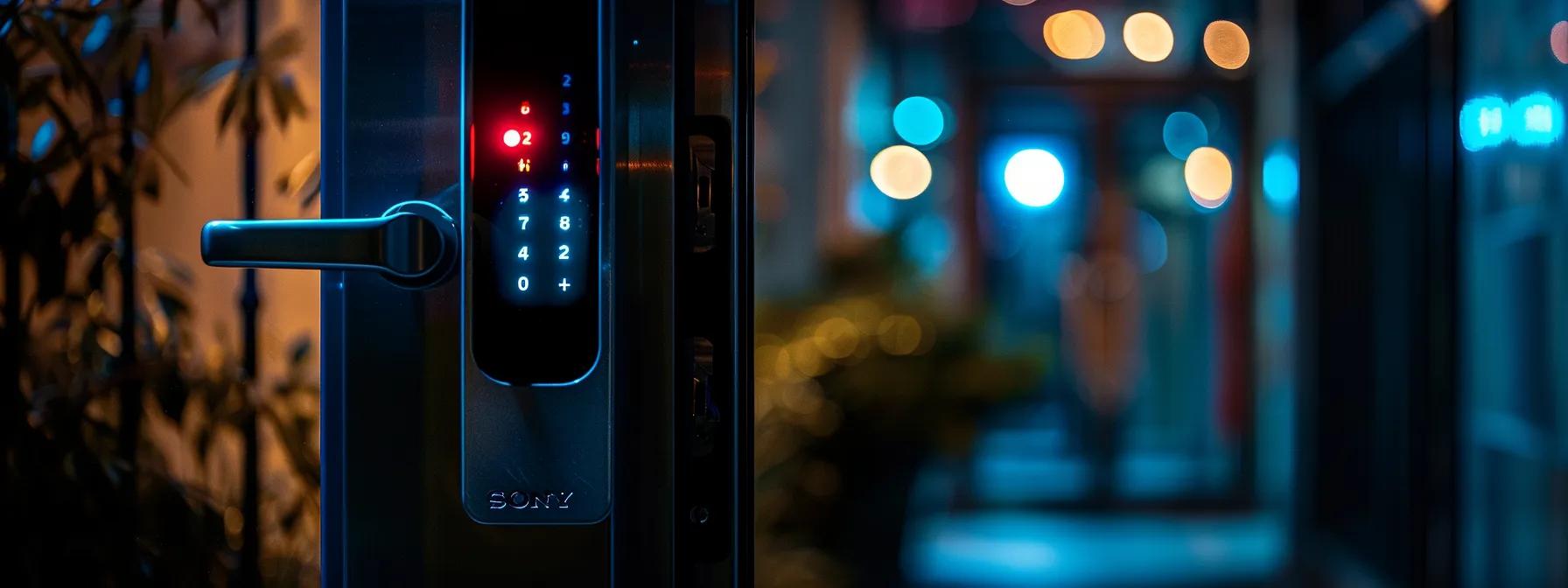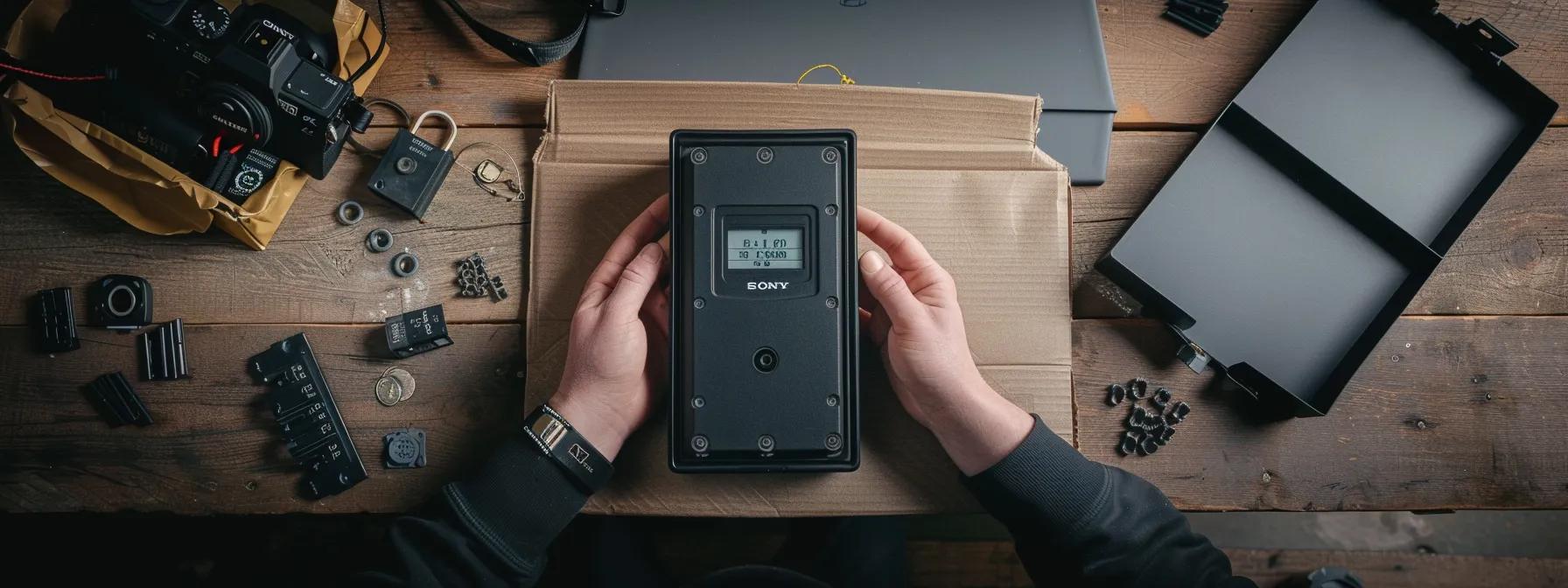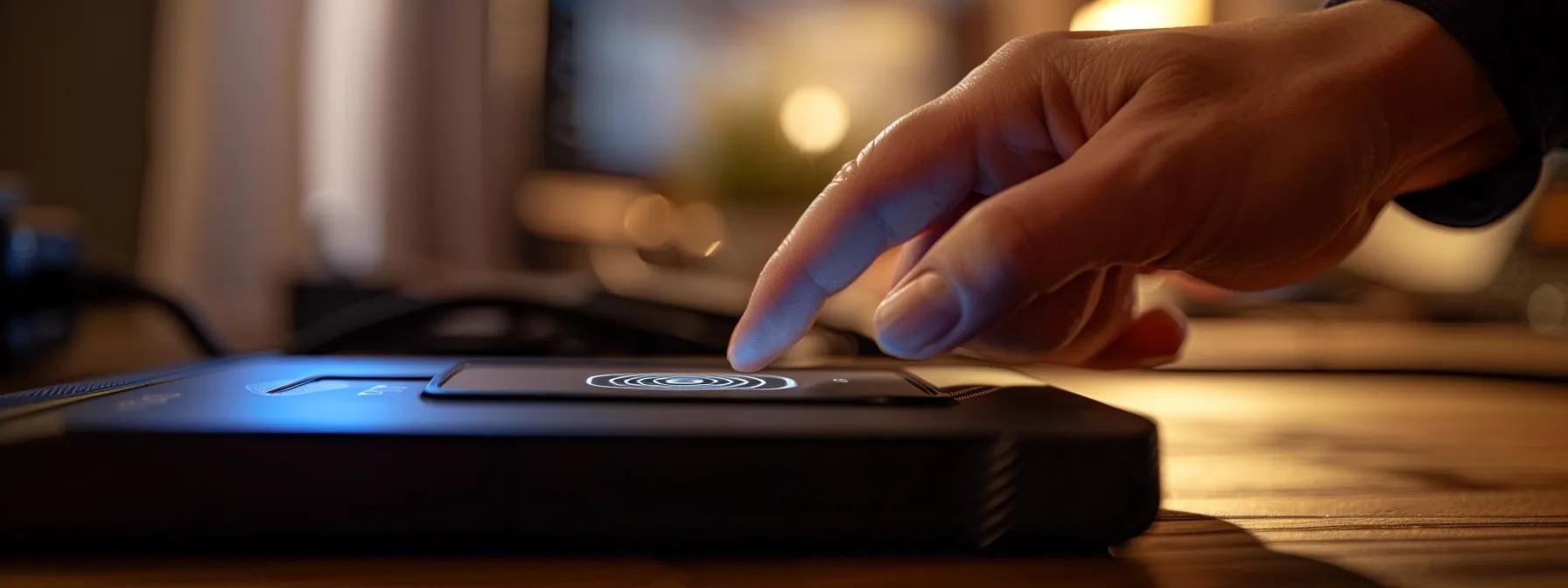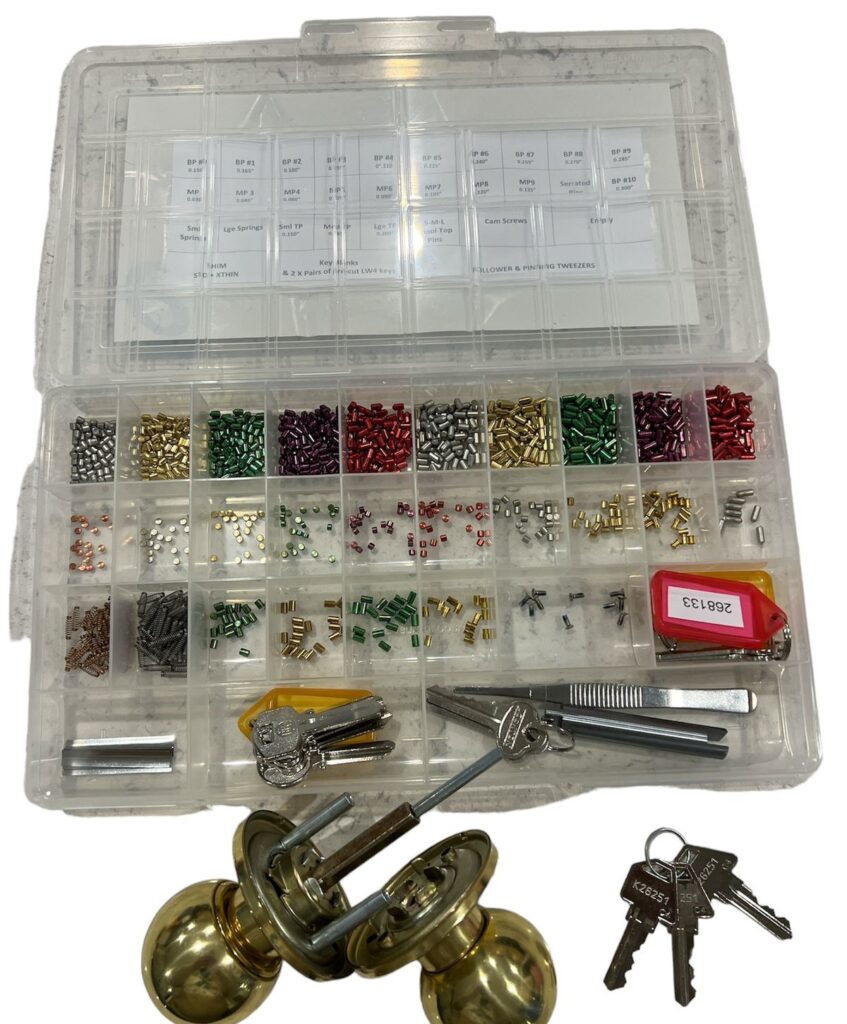Are you tired of misplacing your keys or worrying about unauthorized access to your property? A biometric keysafe offers a secure solution for both residential and commercial needs. This guide will walk you through the installation process, from understanding your keysafe to setting up biometric access. By following these step-by-step instructions, you will gain peace of mind knowing your property is protected. Whether you are a homeowner or a business owner, this guide will help you effectively install your keysafe and address common issues, ensuring you can rely on your locksmith services when needed.
Understanding Your Biometric Keysafe

Biometric keysafes offer advanced security features, including electronic locks and authenticators, designed to prevent business lockout scenarios. Understanding the key features and specifications of these safes is essential for maximizing their benefits. Additionally, safety considerations play a crucial role in ensuring effective use. This section will explore these aspects in detail, providing practical insights for commercial locksmith and locksmith services users.
Key Features and Specifications
Biometric keysafes are equipped with smart lock technology that enhances security by using unique biometric identifiers, such as fingerprints, for access. These devices often feature a robust shackle and can be mounted on a wall for added stability, making them ideal for both residential locksmith and commercial locksmith use. Additionally, many models include a USB port for easy charging, ensuring that the safe remains operational even during power outages.
Benefits of Biometric Security
The benefits of biometric security are significant, particularly when utilizing a fingerprint scanner in a biometric keysafe from our locksmith services. This technology enhances access control by ensuring that only authorized users can unlock the padlock, eliminating the risks associated with lost keys or forgotten combination locks. Additionally, many biometric safes can be integrated with a mobile locksmith app, allowing users to monitor access and manage settings remotely, further increasing security and convenience.
Important Safety Considerations
When installing a biometric keysafe, it is crucial to consider safety measures to ensure optimal functionality and security. Users should ensure that the fingerprint sensor is clean and unobstructed to maintain accurate readings, as dirt or moisture can hinder performance. Additionally, proper placement of the keypad and door alignment is essential to prevent unauthorized access and ensure the safe operates smoothly during installation.
- Ensure the fingerprint sensor is clean and unobstructed.
- Check the alignment of the keypad and door for smooth operation.
- Follow manufacturer guidelines for installation to enhance security.
Now that the workings of your biometric keysafe are clear, it’s time to focus on the next step. Preparing for installation will ensure you get the most out of this secure solution.
Preparing for Installation

Before installing a biometric keysafe, it is essential to unpack and inspect the device for any damage. Gathering necessary tools and materials, such as steel screws and a backup power source, will facilitate a smooth installation process. Choosing the optimal location for the keysafe enhances security, while reading the manufacturer’s guidelines ensures compliance with warranty requirements. Each of these steps is crucial for effective installation and operation.
Unpacking and Inspecting Your Device
Unpacking and inspecting the biometric keysafe is a critical first step in the installation process. Users should carefully remove the device from its packaging, checking for any visible damage or missing components. Ensuring that all parts are intact and functioning properly will prevent complications during installation and guarantee optimal performance of the biometric security features.
Gathering Necessary Tools and Materials
Gathering the necessary tools and materials is a vital step in the installation of a biometric keysafe. Users should prepare items such as a drill, screws, a level, and a screwdriver to ensure a secure and accurate installation. Additionally, having a backup power source, like batteries or a power bank, can prevent interruptions during setup, allowing the biometric keysafe to function optimally from the start.
Choosing the Optimal Installation Location
Choosing the optimal installation location for a biometric keysafe is crucial for maximizing its security and functionality. It is advisable to select a spot that is discreet yet accessible, such as near an entry point that is not easily visible to outsiders. Additionally, ensuring the area is free from obstructions and has a stable surface will facilitate proper operation of the biometric features, ultimately enhancing the overall effectiveness of the keysafe.
Reading the Manufacturer’s Guidelines
Reading the manufacturer’s guidelines is a critical step in the installation process of a biometric keysafe. These instructions provide essential information regarding the specific requirements for installation, including recommended tools, safety precautions, and troubleshooting tips. By following these guidelines, users can ensure that the keysafe is installed correctly, maximizing its security features and maintaining compliance with warranty conditions.
With the tools ready and the plan in place, the moment to act has arrived. The installation process awaits, and each step will bring clarity to the task ahead.
Step-by-Step Installation Process

The step-by-step installation process for a biometric keysafe involves several critical tasks to ensure optimal security and functionality. This section will cover marking mounting holes accurately, drilling and preparing the surface, securing the keysafe to the wall, ensuring proper alignment and stability, and conducting a final inspection before use. Each step is essential for achieving a successful installation that meets safety standards.
Marking Mounting Holes Accurately
Accurate marking of mounting holes is essential for the successful installation of a biometric keysafe. Users should begin by holding the keysafe against the chosen surface and using a level to ensure it is straight. Once positioned correctly, they can mark the mounting holes with a pencil, ensuring that the marks are clear and precise to facilitate drilling and secure attachment, ultimately enhancing the keysafe’s stability and security.
Drilling and Preparing the Surface
Drilling and preparing the surface for a biometric keysafe is a critical step that ensures a secure installation. Users should select a drill bit that matches the size of the screws provided with the keysafe, as this will facilitate a snug fit and enhance stability. It is advisable to drill pilot holes first to prevent cracking the surface material, ensuring that the keysafe remains securely mounted and functions effectively over time.
- Choose the appropriate drill bit size for the screws.
- Drill pilot holes to avoid surface damage.
- Ensure the surface is clean and free of debris before installation.
Securing the Keysafe to the Wall
Securing the keysafe to the wall is a critical step in the installation process that ensures both stability and security. Users should align the keysafe with the previously marked holes and insert the screws firmly, making sure it is tightly fastened to prevent any movement. A well-secured keysafe not only enhances its functionality but also deters unauthorized access, providing peace of mind for users concerned about the safety of their valuables.
Ensuring Proper Alignment and Stability
Ensuring proper alignment and stability during the installation of a biometric keysafe is crucial for its effective operation. Users should double-check that the keysafe is level and securely fastened to the wall, as any misalignment can lead to operational issues or unauthorized access. A well-aligned keysafe not only enhances security but also ensures that the biometric features function correctly, providing peace of mind for users concerned about the safety of their valuables:
- Verify that the keysafe is level before securing it.
- Use a level tool to check alignment during installation.
- Ensure screws are tightened adequately to prevent movement.
Final Inspection Before Use
Conducting a final inspection before using the biometric keysafe is essential to ensure its proper functionality and security. Users should verify that all screws are tightened and that the keysafe is securely mounted to the wall, preventing any potential movement. Additionally, testing the biometric features, such as the fingerprint scanner, will confirm that the device operates smoothly, providing peace of mind that valuables are protected effectively.
With the installation complete, the next step awaits. Setting up biometric access will add a layer of security that is both modern and efficient.
Setting Up Biometric Access

Setting up biometric access for a keysafe involves several key steps to ensure secure and efficient operation. This section will cover powering on the keysafe, registering administrator fingerprints, adding additional users, configuring access settings, and testing biometric functionality. Each of these tasks is essential for establishing a reliable security system that meets the user’s needs.
Powering on the Keysafe
Powering on the biometric keysafe is the first step in establishing secure access. Users should locate the power button, typically found on the device’s exterior, and press it to activate the system. Once powered on, the keysafe will initiate a self-check process, ensuring all components are functioning correctly before proceeding with the setup of biometric access.
Registering Administrator Fingerprints
Registering administrator fingerprints is a crucial step in setting up biometric access for a keysafe. Users should follow the manufacturer’s instructions to ensure that the fingerprint scanner accurately captures the unique patterns of the administrator’s fingerprints. This process typically involves placing the finger on the scanner multiple times to create a reliable biometric profile, which enhances security by allowing only authorized personnel to access the keysafe.
Adding Additional Users
Adding additional users to a biometric keysafe is a straightforward process that enhances access control for authorized personnel. Users should follow the manufacturer’s guidelines to register new fingerprints, ensuring that each individual’s unique biometric data is accurately captured. This process typically involves placing the finger on the scanner multiple times to create a reliable profile, allowing for seamless access while maintaining security for the keysafe.
Configuring Access Settings
Configuring access settings on a biometric keysafe is essential for ensuring that only authorized users can gain entry. Users should navigate to the access settings menu on the device, where they can customize permissions for each registered fingerprint. This process allows for the management of user access levels, enabling the owner to grant or restrict entry based on specific needs, thereby enhancing overall security and control over the keysafe’s contents.
Testing Biometric Functionality
Testing biometric functionality is a critical step in ensuring that the keysafe operates effectively and securely. Users should conduct multiple tests of the fingerprint scanner to confirm that it accurately recognizes registered fingerprints. This process not only verifies the reliability of the biometric access system but also helps identify any potential issues that may need addressing, ensuring that only authorized individuals can access the keysafe and enhancing overall security.
Biometric access can sometimes falter, leaving users frustrated. Understanding common issues will help ensure smooth operation and peace of mind.
Troubleshooting Common Issues

Troubleshooting common issues with a biometric keysafe is essential for maintaining its security and functionality. This section addresses fingerprint recognition problems, power supply issues, and mounting or alignment errors. Additionally, it covers the process of resetting the device to factory settings. Each topic provides practical insights to help users resolve these challenges effectively.
Addressing Fingerprint Recognition Problems
Fingerprint recognition problems can arise due to various factors, including dirt or moisture on the sensor, improper finger placement, or the need for recalibration. Users should regularly clean the fingerprint scanner to ensure optimal performance and check that their fingers are positioned correctly during scanning. If issues persist, it may be necessary to re-register the fingerprints, following the manufacturer’s guidelines to enhance the accuracy of the biometric access system.
Resolving Power Supply Issues
Power supply issues can significantly impact the functionality of a biometric keysafe, leading to frustration for users. To resolve these problems, it is essential to first check the power source, ensuring that batteries are installed correctly and are not depleted. If the keysafe is connected to an external power supply, verifying that the connection is secure and that the outlet is functioning can help restore power. Regular maintenance, such as replacing batteries as needed and keeping the power connections clean, can prevent future power-related issues and ensure the keysafe operates smoothly.
Fixing Mounting and Alignment Errors
Fixing mounting and alignment errors is essential for ensuring the proper functionality of a biometric keysafe. Users should first check that the keysafe is level and securely attached to the wall, as any misalignment can lead to operational issues or unauthorized access. If the keysafe is not aligned correctly, it may be necessary to remove it, adjust the mounting holes, and re-secure it to guarantee optimal performance and security:
Resetting to Factory Settings
Resetting a biometric keysafe to factory settings can resolve persistent issues, such as unresponsive fingerprint recognition or incorrect access configurations. Users should consult the manufacturer’s instructions to locate the reset button or sequence, which typically involves pressing a combination of buttons. This process restores the device to its original state, allowing for a fresh setup and ensuring that all previous user data is cleared, thus enhancing security and functionality.
After addressing the common issues, it is time to consider how to keep your locks in top shape. Simple maintenance and security tips can protect your home and provide peace of mind.
Maintenance and Security Tips

Maintaining a biometric keysafe is essential for ensuring its longevity and security. This section covers key practices such as cleaning the biometric sensor properly to enhance accuracy, regularly updating user access to manage permissions, and replacing batteries or power sources to prevent operational failures. Additionally, implementing extra security measures can further protect the contents of the keysafe.
Cleaning the Biometric Sensor Properly
Cleaning the biometric sensor of a keysafe is essential for maintaining its accuracy and functionality. Users should regularly wipe the sensor with a soft, lint-free cloth to remove dust, dirt, or moisture that may interfere with fingerprint recognition. This simple maintenance task ensures that the biometric access system operates smoothly, reducing the likelihood of recognition issues and enhancing overall security.
Regularly Updating User Access
Regularly updating user access on a biometric keysafe is essential for maintaining security and ensuring that only authorized individuals can access the safe. Users should routinely review and modify access permissions, especially when personnel changes occur, such as new hires or departures. This proactive approach not only enhances security but also minimizes the risk of unauthorized access, ensuring that the keysafe remains a reliable solution for protecting valuable items.
Replacing Batteries or Power Sources
Replacing batteries or power sources in a biometric keysafe is essential for maintaining its functionality and security. Users should regularly check the battery status and replace them as needed to prevent unexpected lockouts. For optimal performance, it is advisable to use high-quality batteries and follow the manufacturer’s guidelines for installation, ensuring that the keysafe remains operational and secure at all times.
Enhancing Security With Additional Measures
Enhancing security with additional measures is vital for maximizing the effectiveness of a biometric keysafe. Users should consider implementing surveillance cameras in the vicinity of the keysafe to deter potential intruders and monitor access. Additionally, integrating the keysafe with a home security system can provide real-time alerts and notifications, ensuring that any unauthorized attempts to access the safe are promptly addressed, thereby reinforcing overall security and peace of mind.
Conclusion
The “Complete Biometric Keysafe Installation Guide” is essential for ensuring the effective and secure use of biometric keysafes. By following the step-by-step instructions, users can maximize the functionality and security of their devices, preventing unauthorized access and potential lockout scenarios. Proper installation, maintenance, and user management are crucial for maintaining the integrity of the biometric system. Ultimately, this guide empowers users to protect their valuables with confidence and peace of mind.


